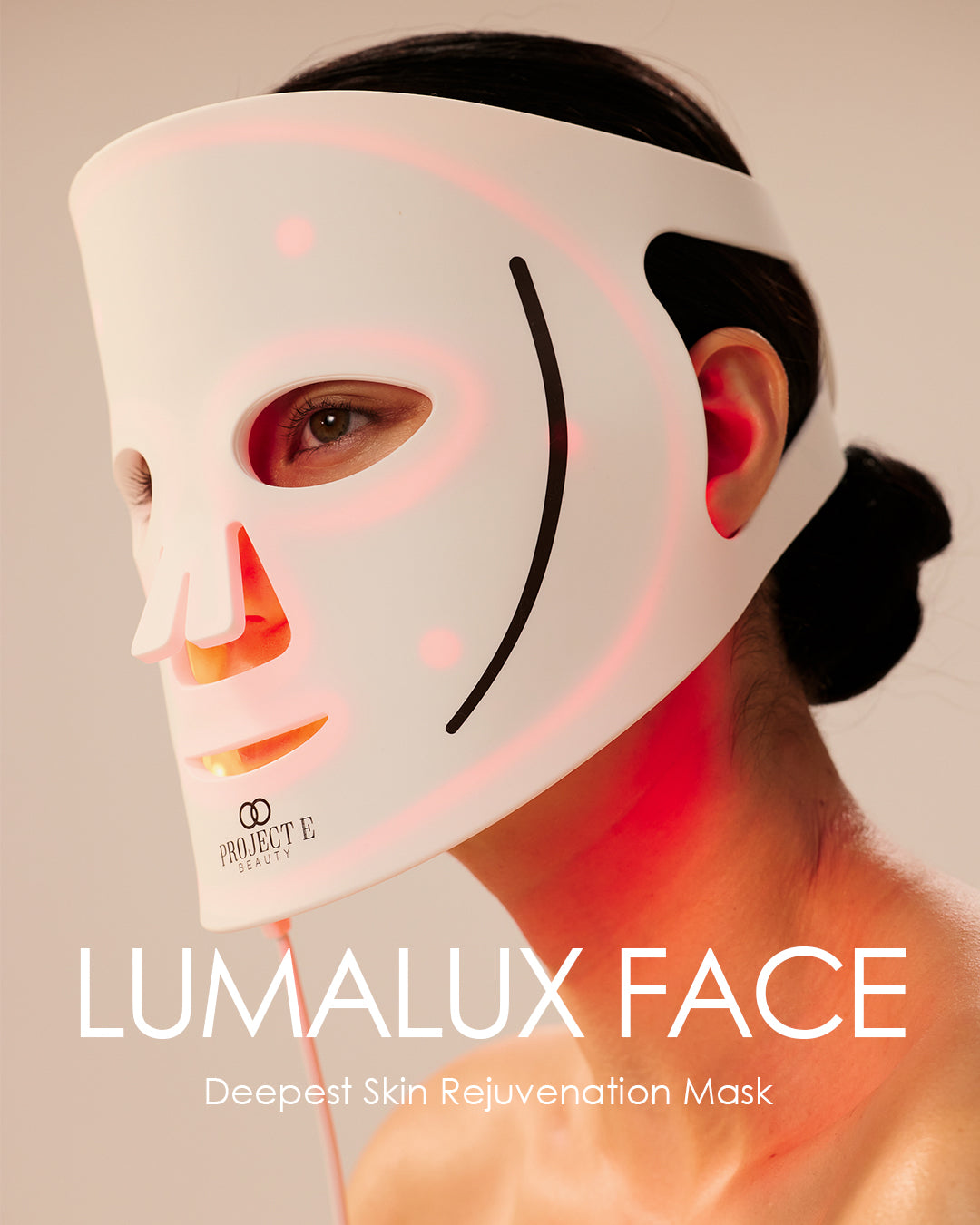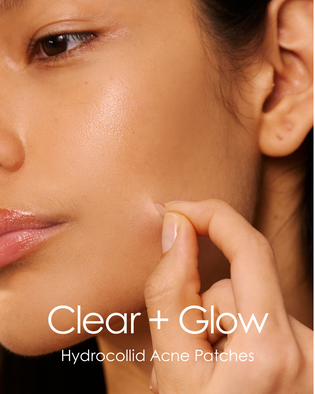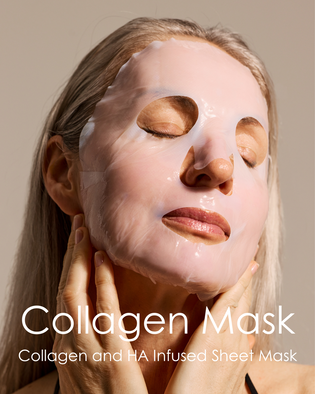
A Deeper Dive Into Infrared Light Therapy Wavelengths 810nm, 830nm, 850nm
- 01 Key Takeaways
- 02 What Is the Difference Between Red and Infrared Light Therapy Wavelengths?
- 03 What Are the Best Infrared Light Therapy Wavelengths?
- 04 700-800nm
- 05 808/810nm
- 06 830nm Wavelengths
- 07 850nm
- 08 Conclusion
Key Takeaways
- Infrared light penetrates deeper than red light.
- Near-infrared wavelengths of 810nm, 830nm, and 850nm offer targeted benefits.
- Red and infrared light work better together, enhancing the effectiveness of each wavelength.
- There is scientific support, including many human studies, on the benefits of near-infrared light.
Today, we shed light on the lesser-known, but equally powerful, infrared light therapy and the wavelengths to look out for when choosing your at-home infrared light therapy device. In the world of advanced skincare, infrared light therapy is gaining attention for its unique ability to support skin health beyond what visible light can achieve. But not all light wavelengths are created equal. Knowing the difference between red and infrared light therapy wavelengths and understanding which wavelengths work best for your skin goals can empower you to make the most of your skincare and wellness routines.

What Is the Difference Between Red and Infrared Light Therapy Wavelengths?
'Near infrared light' is often used alongside red light therapy wavelengths in at-home devices.
Here is a breakdown of infrared light wavelengths
- Near infrared Light 780-3,000 nanometers (used in LED devices) (shortest wavelength).
- Far infrared Light 50,000 to 1,000,000 nanometres.
- Mid infrared Light 3,000 - 50,000 (rarely used in clinical practice).
Red light and infrared light are more commonly combined in at-home LED light therapy devices. They are known to support different stages of the collagen production process, making them complementary therapies. Similar to red light, near infrared light wavelengths fall under the definition of 'photobiomodulation' in essence - the changing of cells or tissue in response to a stimulus, in this case, light energy. Infrared light bolsters the effects of red light therapy by targeting deeper skin layers as well as underlying tissue, bone, and nerves. For this reason, infrared light is widely used as a healing therapy with links to improved brain health, inflammation, pain, and even more complex conditions such as alzheimer's disease, depression, and stroke.
The primary difference between red and infrared light wavelengths is that red light wavelengths are part of the visible light spectrum, with a range between 600-700nm, while infrared light wavelengths belong to a category of light known as 'invisible light' and cannot be detected by the human eye. The wavelengths are longer, starting from 780nm all the way up to 1,000,000 nanometres (1mm).

What Are the Best Infrared Light Therapy Wavelengths?
Along the near-infrared light spectrum, some wavelengths stimulate stronger biochemical responses than others, a range known as the 'therapeutic window.' To achieve the best results, select a device with a wavelength that aligns with your specific treatment goals for example, 850nm infrared light is best for skin rejuvenation, while 810nm infrared light is best for mood and brain health. We explore the best infrared wavelengths below, backed by solid scientific research.
700-800nm
This range represents the transition from visible red light to near-infrared. It may promote skin rejuvenation and collagen synthesis, with moderate penetration. Although it may enhance skin in certain doses, it is not the optimal infrared light therapy wavelength. Many of the studies conducted on 700–800nm light wavelengths see them combined with other infrared wavelengths, such as 810 and 850, so it may be hard to examine their effectiveness in isolation. For maximum impact, choose a device featuring 810, 830, or 850nm wavelengths to stimulate collagen, enhance healing, and promote lasting skin health.

808/810nm
There is little difference between 808 and 810nm wavelengths, so we will look at them together. There is a well-established link between 810/808nm infrared wavelengths and brain health. They are thought to have a neuroprotective effect on the brain, particularly in those recovering from a stroke or traumatic brain injury or suffering from psychiatric disorders. One 2007 study established that 70% of stroke patients treated with infrared light therapy had a positive recovery 90 days post-stroke.
A ground-breaking study in psychiatric patients highlighted the link between infrared light therapy and depression and anxiety.
After just two weeks of treatment,
- 6/10 patients showed remission of depression symptoms with a score of 10 or less on the HAM-D scale
- 7/10 patients showed a remission in symptoms of anxiety with a similar score of 10 or less on the HAM-A scale.
- The average blood flow to the brain also increased, and no side effects were reported from the treatment.
- No adverse effects were identified
808nm light therapy has also been useful in boosting blood circulation, in the treatment of dermatitis, and in muscle recovery post-exercise. There is also evidence to indicate that this wavelength is beneficial for back pain and wound healing. A key point is that these studies were human trials, offering the most credible insights. Although 810/808 nm wavelengths are less common in home devices compared to 850 nm, they have a wide range of applications that are likely to grow as research in this area advances.
830nm Wavelengths
There is much scientific research in this area showing the benefit of 825-835nm wavelength in treating pain, hypothyroidism, recovery, joint health, skin rejuvenation, and more.
Research indicates that the 830nm wavelength shares similar penetration capabilities with 810nm light, even through dense tissues like the human skull, suggesting its potential for deeper therapeutic effects beyond the skin. This has led experts to regard 830nm as a standout wavelength due to its superior tissue penetration and ability to photoactivate a broader range of cells and biological targets compared to other wavelengths. 830nm wavelengths are a preferred choice for skin rejuvenation, as indicated by a comprehensive review found here
Researchers from this in-depth review of infrared light therapy wavelengths determined 830nm should be the preferred wavelength due to its 'superior depth of penetration', and larger number of cells and targets it has been shown to photoactivate.
Interestingly, one study on LED light therapy and hair growth determined that 830nm is the optimal wavelength, outperforming 670mn and 785nm. The general research shows that a combination of red and infrared light wavelengths is most effective for stimulating the hair follicles to promote hair growth.
Leading researchers in the field, including Dr. Michael Hamblin, widely regarded as a top authority, have noted that while there is some debate among experts, the differences between 810 nm, 830 nm, and 850 nm wavelengths are minimal. What matters most is that at least one of these effective wavelengths is used in the device at an appropriate dose. For example, this study indicates that no significant difference is shown in light penetration through the human skull for 830nm and 810nm.

850nm
850nm wavelengths are largely considered to effectively penetrate deep into the skin, supporting cellular regeneration, a reduction in inflammation, and pain. 850nm wavelengths are also considered to be very effective for enhancing recovery from exercise and boosting the skin and tissue regeneration process. Some studies have demonstrated a positive impact on bone repair and regeneration.
Some data also suggests that 850nm wavelengths reduce the appearance of scars and fibrosis. This may be important for rebuilding skin collagen after acne or other wounds. There is also data in relation to healing dermatitis and melasma, and hyperpigmentation.
Infrared light really represents the intersection between surface-level skin rejuvenation and deeper healing. Many studies have examined the power of infrared light to reduce inflammatory response and pain and enhance blood circulation and wound healing. It can do all this while supporting red light wavelengths to boost collagen production for improved skin elasticity and strength.
Conclusion
Infrared light therapy offers a powerful complement to red light treatments, reaching deeper into the skin and underlying tissues to support healing, regeneration, and overall wellness. Among the near-infrared wavelengths, 810nm, 830nm, and 850nm stand out as the most effective within the therapeutic window, each offering unique benefits—from brain health and mood improvement to skin rejuvenation and pain relief. While 810nm is often praised for its penetration depth, research shows that 830nm excels in activating a broader range of cellular targets, making it a highly versatile choice. The 850nm wavelength is also widely recognized for stimulating tissue repair, reducing inflammation, and enhancing recovery processes. Ultimately, the best infrared light therapy device is one that incorporates these scientifically backed wavelengths at the right doses, empowering you to tailor your treatment to your specific skin and wellness goals. By understanding the distinctions and benefits of these wavelengths, you can make an informed choice and confidently embrace the future of effective, at-home light therapy.

written by Olivia Khader














2 comments
Hallo,hoelang mag ikroodlict therapie gebruiken per dag
Carine Vannieuwenhuyse
Hallo,hoelang mag ikroodlict therapie gebruiken per dag
Carine Vannieuwenhuyse
Leave a comment
This site is protected by hCaptcha and the hCaptcha Privacy Policy and Terms of Service apply.